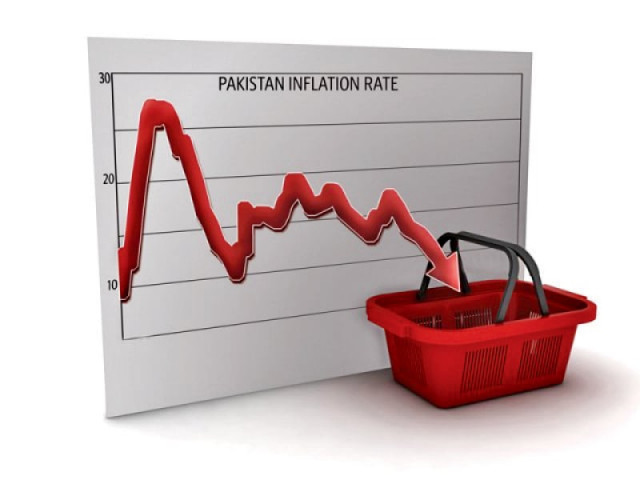Monetary policy: Analysts revise policy rate expectation for remainder of FY14
Expect SBP to hold interest rate steady as inflation dips.

8.8% is the seven-month inflation figure for the current fiscal year. CREATIVE COMMONS
In the first review of the $6.7 billion International Monetary Fund (IMF) programme, the IMF had asked the government to raise the monetary policy rate to check inflation.
But after clocking up at 10.9% in November, the Consumer Price Index (CPI) first slipped to 9.2% in December and then reached 7.9% in January. This put a question mark over the market consensus that the State Bank of Pakistan (SBP) would pursue further monetary tightening by hiking the policy rate, which currently stands at 10%.

Although the IMF has recently increased its CPI forecast for fiscal year 2013-14 from 7.9% to 10% expecting that inflation will soon rise again, analysts still believe CPI will remain in the single digit for the rest of the year.
According to KASB Securities, the discount rate is expected to remain flat at 10% in the next monetary policy announcement, which is due in March. As a result, the brokerage house has now reduced its discount rate estimate for June 2014 from 11% to 10%.
The seven-month inflation since the beginning of the current fiscal year has been 8.8%.

Speaking to The Express Tribune, Topline Securities CEO Mohammed Sohail said the SBP’s inflation target of 11%-12% is on the higher side, adding the actual inflation for the current fiscal year will likely be in the range of 9%-10%. “With easing inflationary pressure, we don’t expect any change in the policy rate in the remaining months of the year,” Sohail noted.
Moreover, the trend in the money market shows an overwhelming majority of investors expects the rate will be kept flat at 10% in the next monetary policy announcement.
For instance, in the latest auction of market treasury bills held on February 4, about 44% of total participation was witnessed in the six-month papers only. It is unusual given that typically three-month bills attract investors’ attention whenever a rate hike is on the cards.
Effects of US tapering
Another reason most analysts initially expected the SBP to increase the discount rate was the vulnerability that a number of emerging economies face due to the United States Federal Reserve’s tapering.
The US has announced that it will reduce its monthly bond buying programme by $10 billion to $65 billion February onwards. This will diminish liquidity in the international financial market, thus reducing investments in equity and debt markets of emerging economies around the world.
According to Global Securities research analyst Umair Naseer, Pakistan is likely to remain unaffected by the slowdown in liquidity injections by the US Federal Reserve.
“We believe that Pakistani markets never really benefitted from the liquidity injections by the Fed. Hence, any outflow from Pakistan owing to US tapering is highly unlikely,” said Naseer.
Citing data from 2008 to 2010 during which the total holding of US bonds and mortgage-backed securities by the Fed increased from $800 billion to $2.3 trillion, Naseer said total portfolio investment in Pakistan did not witness any significant rise and still remains lower than the pre-2008 level.
Published in The Express Tribune, February 11th, 2014.
Like Business on Facebook, follow @TribuneBiz on Twitter to stay informed and join in the conversation.



















COMMENTS
Comments are moderated and generally will be posted if they are on-topic and not abusive.
For more information, please see our Comments FAQ